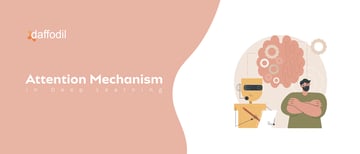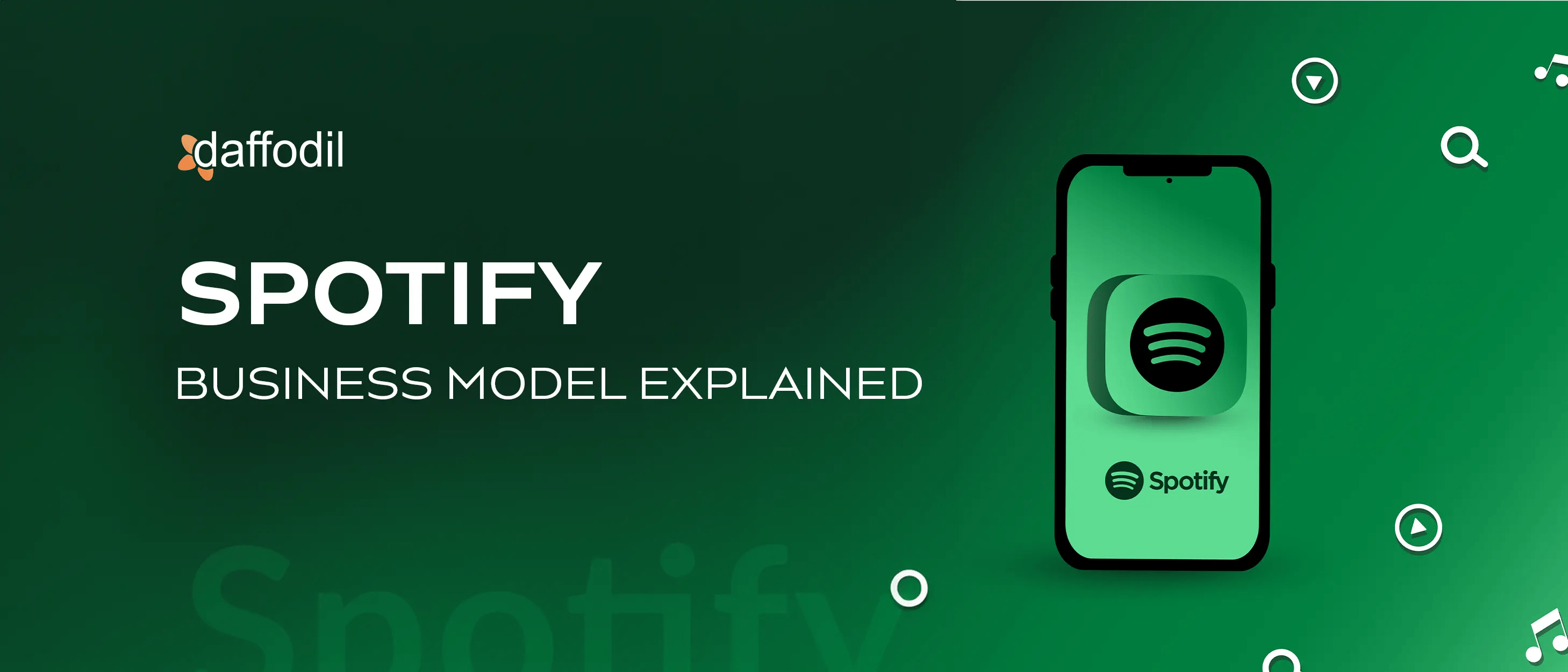
When it comes to online music streaming, Spotify's impact on the music industry is undeniable. Founded by Daniel Ek and Martin Lorentzon, Spotify was created to tackle music piracy and has successfully attracted millions of users who choose to pay for their music, which has significantly reduced piracy.
Spotify: A Brief Introduction
Spotify is an on-demand music streaming service that allows users to browse through a catalog of music, licensed through multiple record labels, and create/share playlists with other users. This internet radio service that provides access to over 100 million songs is available for most modern devices, including Windows, MacOS, Linux computers, PlayStation, and Xbox One home consoles, along with mobile devices- iOS, Windows, and Android smartphones.
- In 2023, 40 percent of the worldwide users of music streaming services opted for Spotify Premium subscriptions, amounting to approximately 226 million subscribers.
- Spotify is the world's most popular audio streaming service with a total of 602 million monthly active users.
- Its annual revenue (for 2023 FY) was $14.37 billion, marking a threefold increase compared to its revenue from the past five years.
Impressive, right? But, how does Spotify manage to hold all the aces, despite facing functional and economic disbalance? How much does it cost to build a music streaming app like Spotify? What are the must-have features and functionalities of an audio streaming app? Which technology is best suited for developing an audio and video streaming app like Spotify?
Recognized for expertise in building apps for the music and entertainment industry such as 106.2 Big FM (radio station streaming app) and Right’s Up (neighboring rights management app), We often come across aforementioned questions from our prospects.
In this article, we are going to dissect this music streaming service for its business model, revenue streams, and technology to know how it works.
Spotify: Success Timeline
Founded: Jul 14, 2006
Founder (s) : Daniel Ek, Martin Lorentzon
Revenue: $14.37 billion(FY 2023)
Number of Users: 602M, including 226M paying subscribers worldwide (FY 2023)
Competitors: Noteflight, Soundcloud, Pandora Radio, Deezer, TIDAL
Technology Stack: Primarily Python, with some Java, C, and C++ components
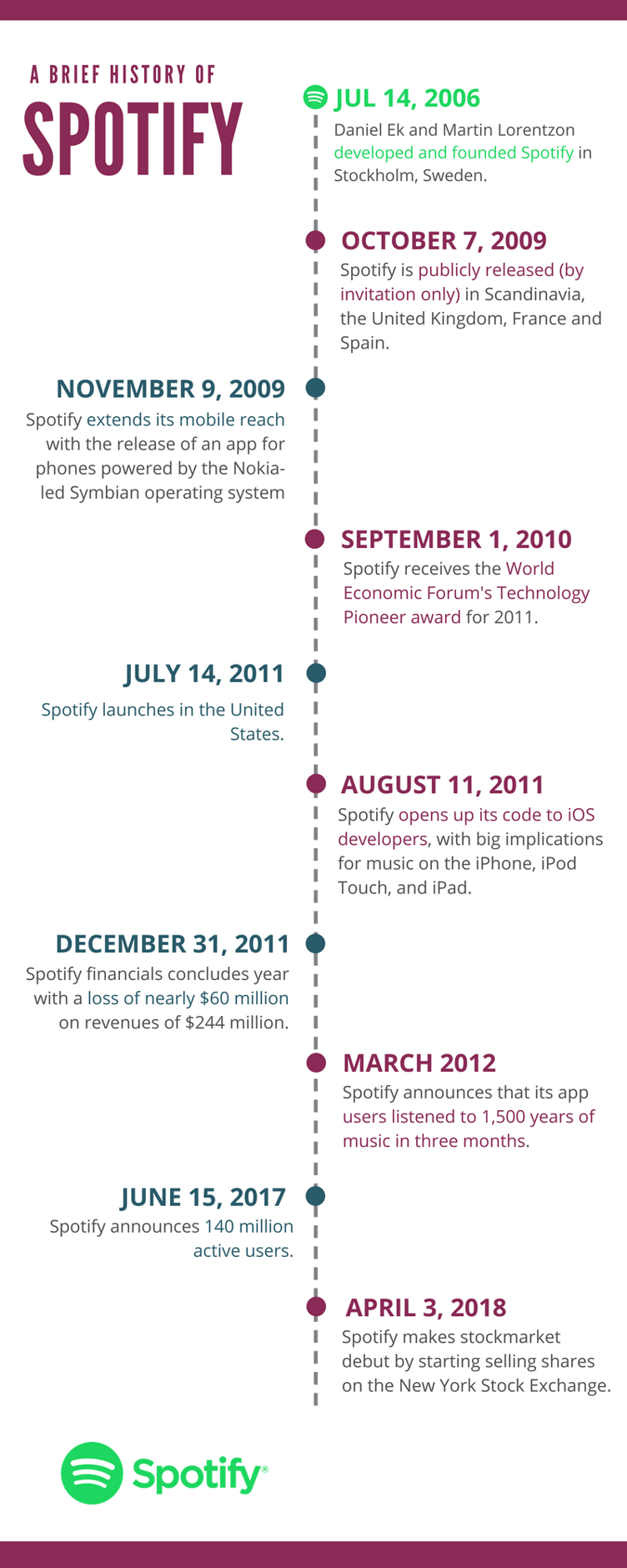
Spotify: What Sets It Apart
Spotify focuses on three main groups: listeners, advertisers, and content creators.
- Listeners are the main focus because they're the ones who enjoy the music and podcasts on the platform.
- Advertisers come in all shapes and sizes, from regular people to businesses, who want to reach audiences through Spotify.
- Content creators, like musicians and podcasters, are important because they provide content that keeps users engaged.
Spotify effectively meets the needs of its users, advertisers, and content creators, providing valuable offerings to each group.
Value Proposition for Users
Spotify promises an enjoyable listening experience for its users, emphasizing inclusivity with its slogan "Music for Everyone." It offers high-quality content accessible across various devices, positioning itself as a leading online music platform. Noteworthy features for users include:
Quality Music: Spotify delivers top-notch audio quality, surpassing competitors in streaming resolution. Additionally, it plans to introduce 'Spotify Hifi' for even higher quality streaming.
Personalization: Users can customize their profiles by selecting favorite artists, genres, and podcasts. The platform then recommends content tailored to their preferences. Collaborative playlist features enhance the personalized experience.
Memorable Experience: Designed to fit the lifestyles of students and young professionals, Spotify ensures easy access to music for various activities, going beyond mere entertainment.
Convenient Exploration: Users can seamlessly manage profiles across multiple devices, accessing a vast library of tracks and podcasts categorized by interests, trends, and artists. The platform enhances user experience by providing tailored content recommendations.
Value Proposition for Advertisers
Spotify offers advertisers a diverse and extensive user base, providing opportunities for effective audience engagement. Key benefits for advertisers include:
Precise Targeting: Spotify's targeting options enable advertisers to reach their desired audience based on demographics, listening behaviors, and past interactions, ensuring their message resonates with the right people.
Creative Freedom: Advertisers can utilize Spotify's ad studio to craft engaging campaigns with audio content. The platform offers resources to help advertisers maximize the impact of their ads.
Flexible Pricing: Advertisers can initiate campaigns with budgets as low as $250, leveraging customizable advertising options and free tools to create and optimize ads according to their objectives and target demographics.
Performance Tracking: Spotify provides detailed campaign reporting, offering insights into audience engagement, ad delivery, and conversion metrics. Collaboration with third-party partners enhances measurement capabilities, ensuring advertisers can accurately assess campaign impact.
Value Proposition for Content Creators
Spotify offers content creators significant exposure and branding benefits. Here's the value they receive from Spotify:
Reaching a Vast Audience: Podcasters can tap into the rapidly growing audience on Spotify, which has seen a 200% increase in podcast listeners year on year since 2019. With Spotify being the second largest platform for podcasts, creators can maximize their audience reach. Similarly, artists can utilize the platform's extensive user base to expand their fan base.
Creating an Identity: Spotify empowers creative artists and podcasters to express their identity. Artists can use various profile tools to engage with fans through bios, photos, and looped videos. Podcasters benefit from editorial and personalized categorization, helping them establish their brand identity.
Gaining Valuable Insights: Spotify provides real-time statistics to help creators promote their content, understand audience preferences, and track trends. These insights aid in understanding listener behavior and identifying potential audience segments.
What makes Spotify Sell?
Spotify is currently available in over 184 countries and everywhere, there are unique dynamics affecting acceptance of streaming on-demand services. Some of the prominent factors triggering the rise of music-on-demand services include:
1. Popularity of Music Streaming Services amongst GenZ and Millennials
According to a survey, 82 million Americans used music streaming services monthly in 2023, on average tuning in for 20 hours 06 minutes every week.
Deloitte anticipates that in 2024, a larger number of people globally will enjoy audio entertainment. This could translate to approximately 750 million monthly average streaming music subscribers and close to 4 billion monthly average radio listeners, representing about half of the world's population. Additionally, Deloitte predicts that the revenue generated by the global audio entertainment market will surpass $75 billion in 2024.
When it comes to who uses Spotify the most, it's mainly students and young professionals. According to Statista, most users are between 25 and 34 years old, closely followed by those aged 18 to 24. This shows that Spotify is popular with Gen Z and Millennials.
In the United States:
- More than half of individuals (55%) aged 16 to 34 have a subscription to an audio streaming service for music.
- Millennials in North America spent an average of 140 minutes (2 hours and 33 minutes) using music streaming services daily. (GlobalWebIndex)
- Deloitte's report, based on responses from 2,003 U.S. consumers, reveals a significant uptick in the use of music streaming services, with a 58% increase compared to the previous year. Notably, adoption rates among Generation Z and millennial consumers hover around 60%, suggesting even greater popularity among these age groups.
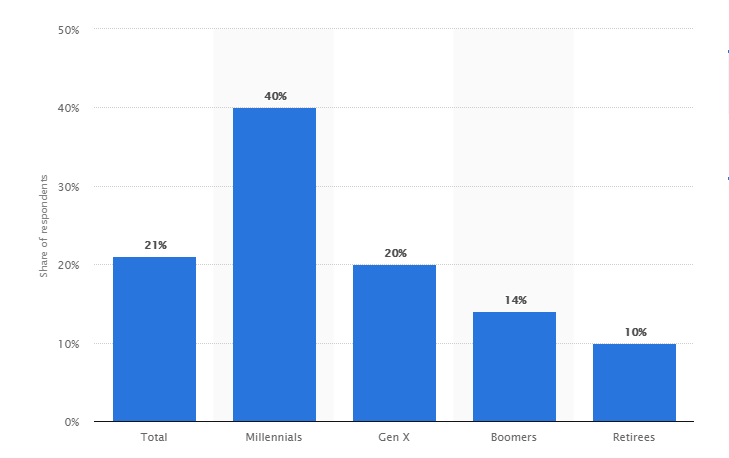
2. Regulating Music Distribution for Artists
The music on Spotify and other streaming services is properly licensed, i.e. it is delivered by labels and distributors only. For every stream by the user, online radio services pay a royalty to respective artists. Since on-demand music streaming services control internet piracy issues, offering credit and neighboring rights to the artists, they are turning out to be a legal hub for music lovers to tune in to their favorites.
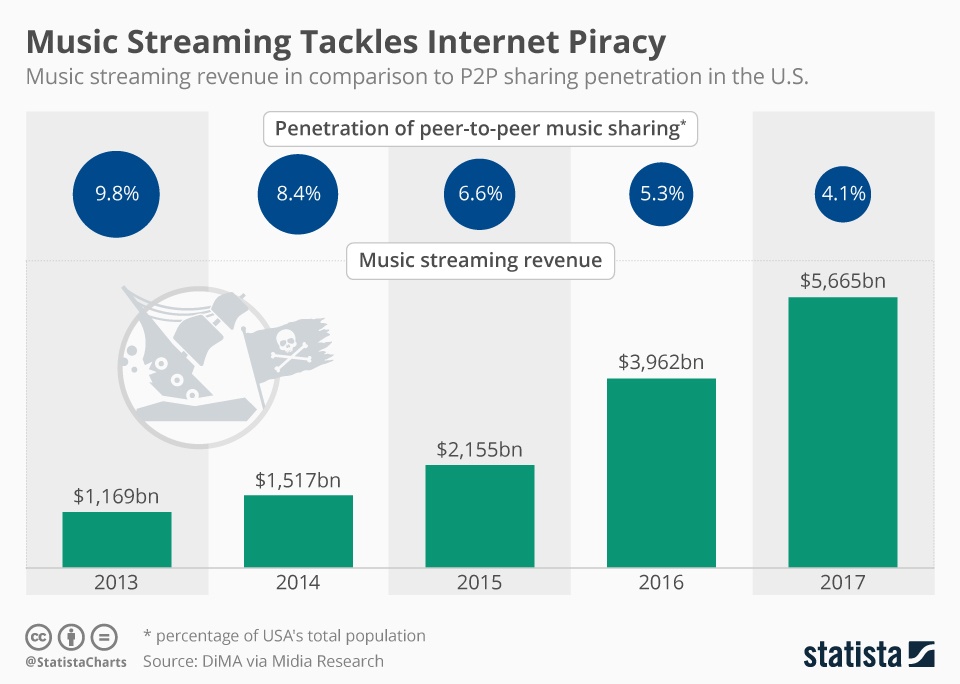
3. Improved Internet Connectivity for Uninterrupted Streaming
Internet is the prerequisite for accessing any digital services. With mobile network operators making a big investment in infrastructure and facilitating high-speed internet services, accessing seamless music online is a possibility for millions of users. According to Statista, over 4 billion people are active internet users. This hike in the number of internet users is giving rise to music-on demand services like Spotify.
How Spotify Works: Business Model
Spotify is house to 70 million songs, all of which gets stored on its own servers. Instead of bogging down its servers, internal computers, and internet bandwidth to stream audios for millions of end-users, Spotify relies upon a P2P network.
- Spotify uses social networking and searches for nearby users using the service to see if check if their caches have the song requested by user. If the cache contains the requested song, spotify enable those computers to play the music. That way, Spotify’s servers are never overloaded.
- To keep the playback speedy, Spotify uses Cached files. Tracks that users play get saved temporarily in their device in a file, called cache. Whenever users want to replay a song, instead of downloading the song again, it is played locally from that file. Also, Spotify preloads subsequent tracks of an album to avoid playback delays.
- All Spotify songs are saved in Vorbis format, which makes the audio file size smaller and easily transferable. Most of the songs on the platform stream at 160 KBPS, while for Premium users, the songs are mostly streamed at 320 KBPS (for higher-quality).
On the business front, Spotify purchases a license from labels, artists, publishers, and other right holders for streaming their music on its platform. For paying royalty to the artists, the platform uses complex algorithms that finalize the royalty per stream for every artist or label. The platform uses factors like country (in which the song gets played), the currency value of the country, contracts, artist value etc. to calculate royalty per stream. Sources reveal that the average per-stream payout to the rights holder at Spotify lands somewhere between $0.003 and $0.005.
How Spotify Makes Money: Revenue Streams
Spotify makes money from two sources:
1. A free tier supported by advertising
2. A premium tier with paid subscription
The freemium version of the Spotify app allows users to browse through the catalogue of songs and play them. However, this music on-demand service comes with advertisements that may interrupt a user’s entertainment. The mobile apps of Spotify have more restrictions in freemium version than the desktop or web apps. Advertisers who pay Spotify for their bending turns out to be a fundraising mode for the streaming platform.
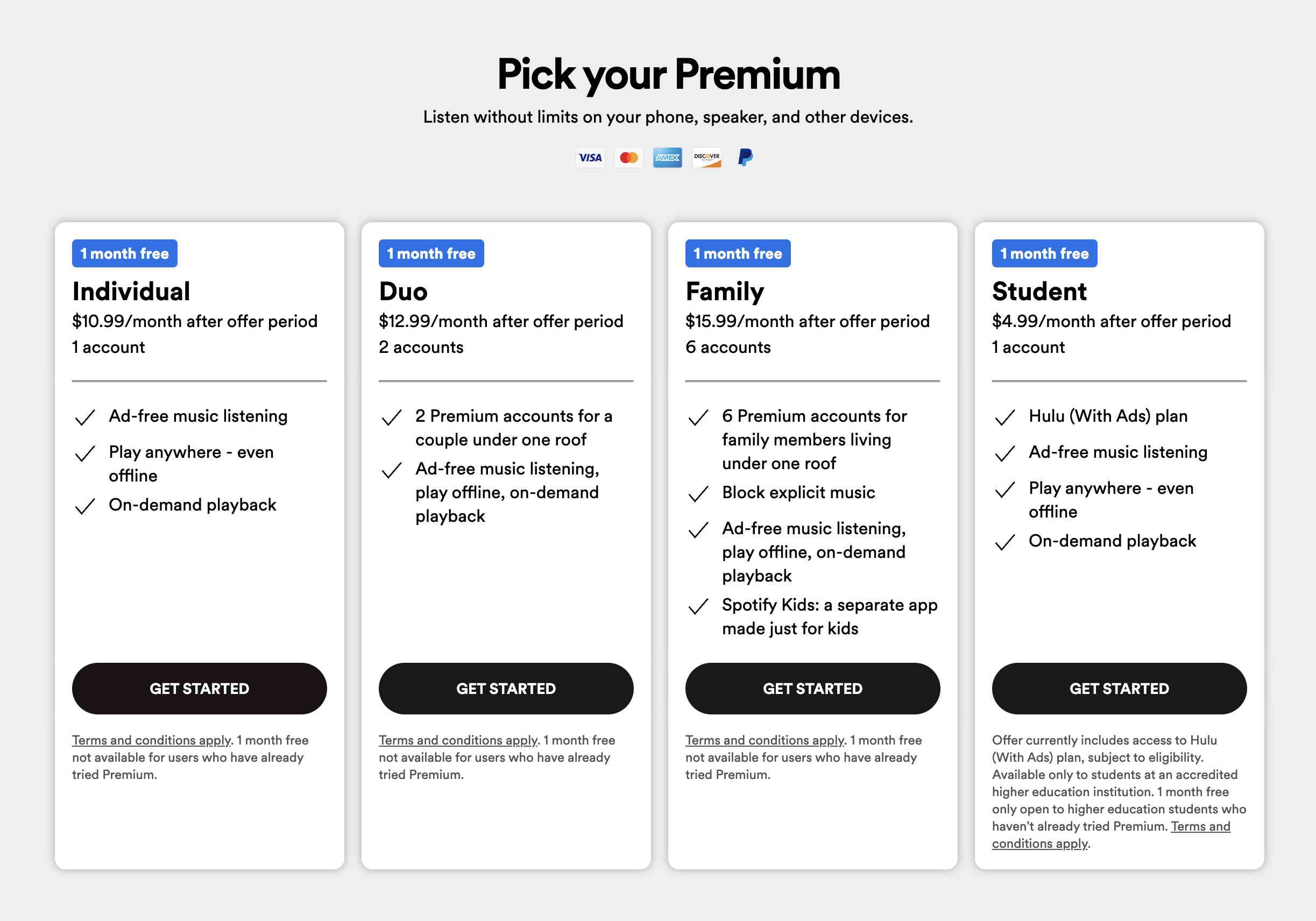
Image credit: To the owner
The premium version of Spotify offers uninterrupted access to music across all devices, including smartphones, tablets, and televisions. Along with a seamless user experience, the premium version facilitates downloading songs to their devices for offline listening and high-quality audio.
Aside from the basic free and paid ones, there's the Family plan which lets everyone in the same house use a premium subscription for less money. This not only saves cash but also encourages sharing and discovering new music together.
Then, there's the Student plan, which gives students a discount, making Spotify more affordable. It understands that students often don't have much money to spare, so this plan helps them enjoy premium features without blowing their budget.
By offering these special plans, Spotify shows it cares about different kinds of users. It's not just about making money; it's about making Spotify available to everyone, no matter their situation.
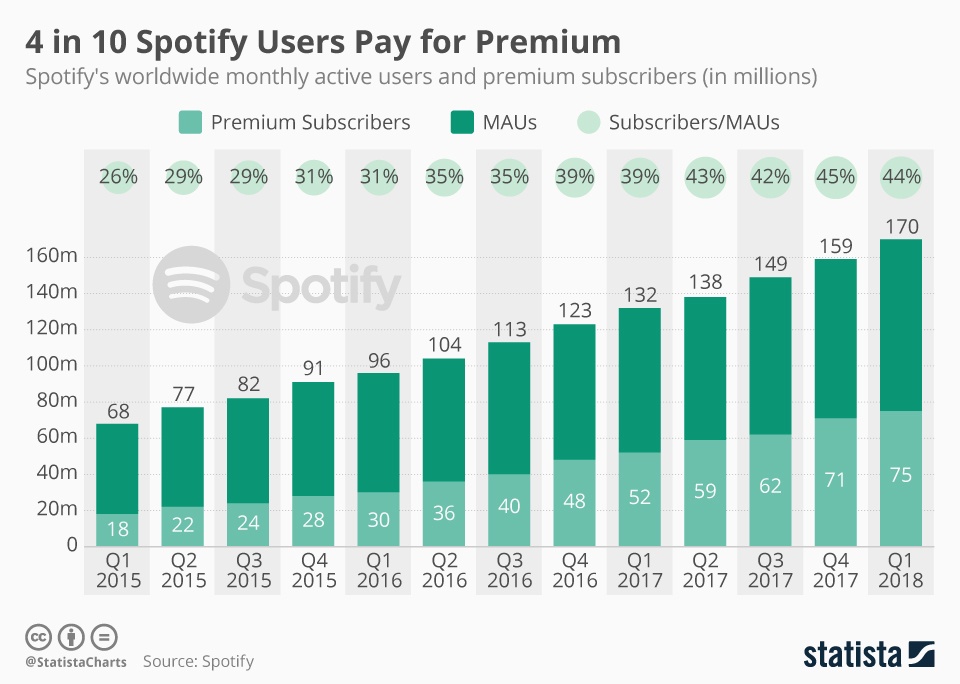
By the end of Q1 2018, the company had 170 million monthly active users, of which 75 million were premium subscribers worldwide
Along with displaying native banner ads, Spotify makes the best of its technology to target its users with audio ads. For that, it supports a number of advertisement models- Sponsored Playlists, Branded Moments, Sponsored Sessions, Audio, Video Takeovers, Display, Homepage Takeovers, Overlay, Advertiser Pages and Branded Playlists. These ads vary in type, size and user engagement.
Branded Moments: This advertising model ensures that marketers are able to tell a story to the right kind of user, at the right time. For example, A sportswear brand can target its audience when they hit the gym and tune in to the workout playlist in the app.
Sponsored Sessions: These ads offer an uninterrupted listening experience to users in exchange for a video. However, they are meant for selected countries and for mobile and computer users only.
Audio Ads: These ads are played at an interval of 15 minutes and gave a maximum duration of 30 seconds.
Video Takeover: Available for computer devices only, these ads are commercial breaks that are shown to users between the songs.
Display Ads: These ads are displayed at the bottom of spotify app and are clickable images shown for 30 seconds.
Welcome Back Ads: These ads are shown to the users when they return back to the app (on mobile or computer). These ads are overlay and hard to be missed out by users.
Homepage Takeovers: These ads have an interactive area on homepage, meant for showing advertisements.
Advertiser Pages: These pages are a microsite, which is seamlessly integrated into the Spotify player. They contain almost every type of content that's found on a webpage, right from clickable images, links, blogs, to news and comments.
With its premium version and over 10 advertising models, Spotify managed to have a revenue of 4.9 billion EUR (2017 FY). However, to build up a better balance sheet and work on shifting its business model to improve its margins, Spotify launched its IPO in 2018.
Building an App like Spotify
Spotify’s success can be accounted to the smart use of technology and creative functionalities that keep the users engaged on the platform. By using advertising as a source of monetization, the leading music streaming platform has been able to build economic stability, despite paying 70% of its total revenue to right holders.
If building an app like the Spotify is on your mind, register yourself for our Discover and Frame Workshop that will guide you with the right features, technology, revenue sources, development cost etc. to get started with your idea.
Get the Business Models Ebook For Free!







